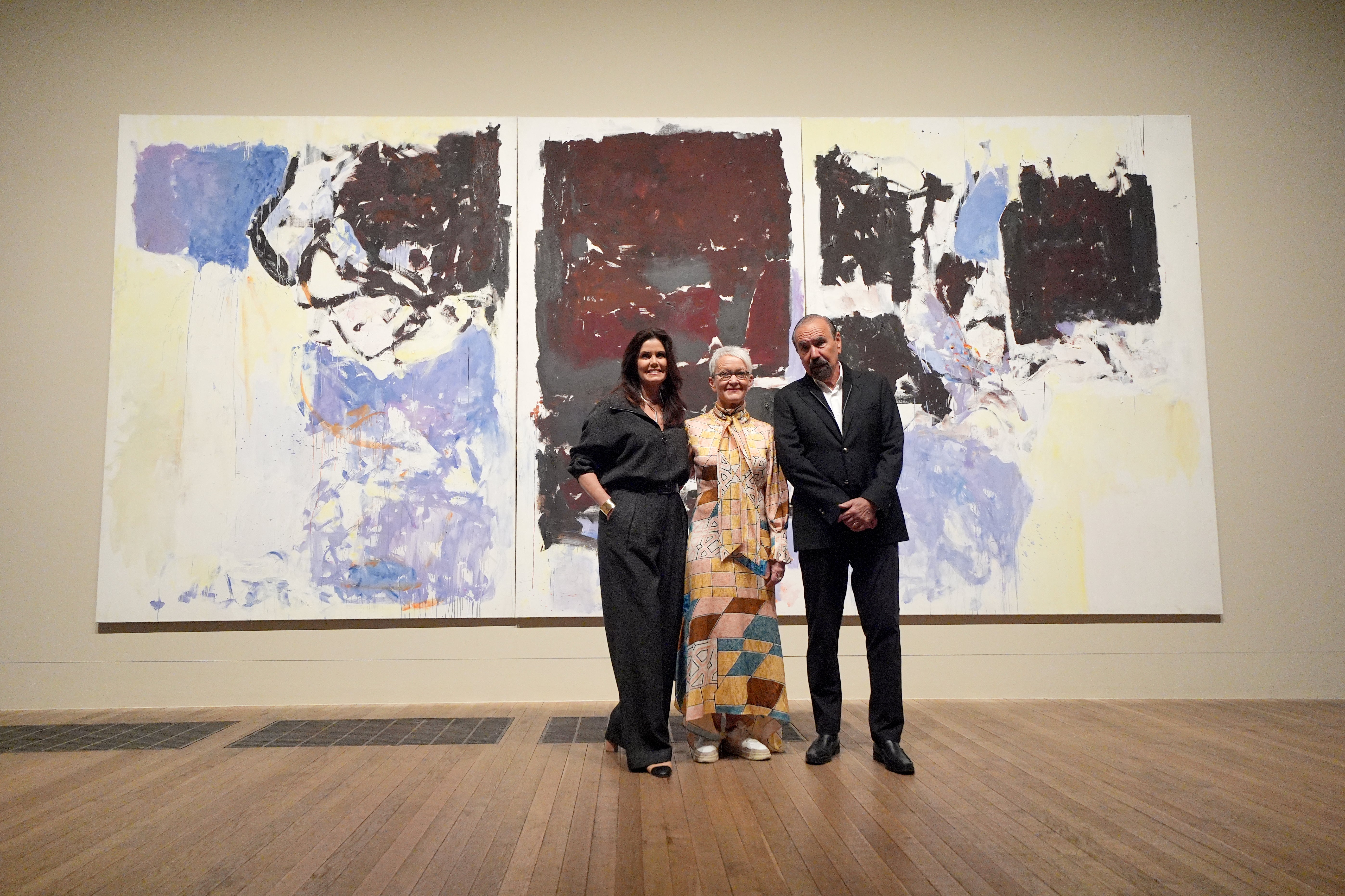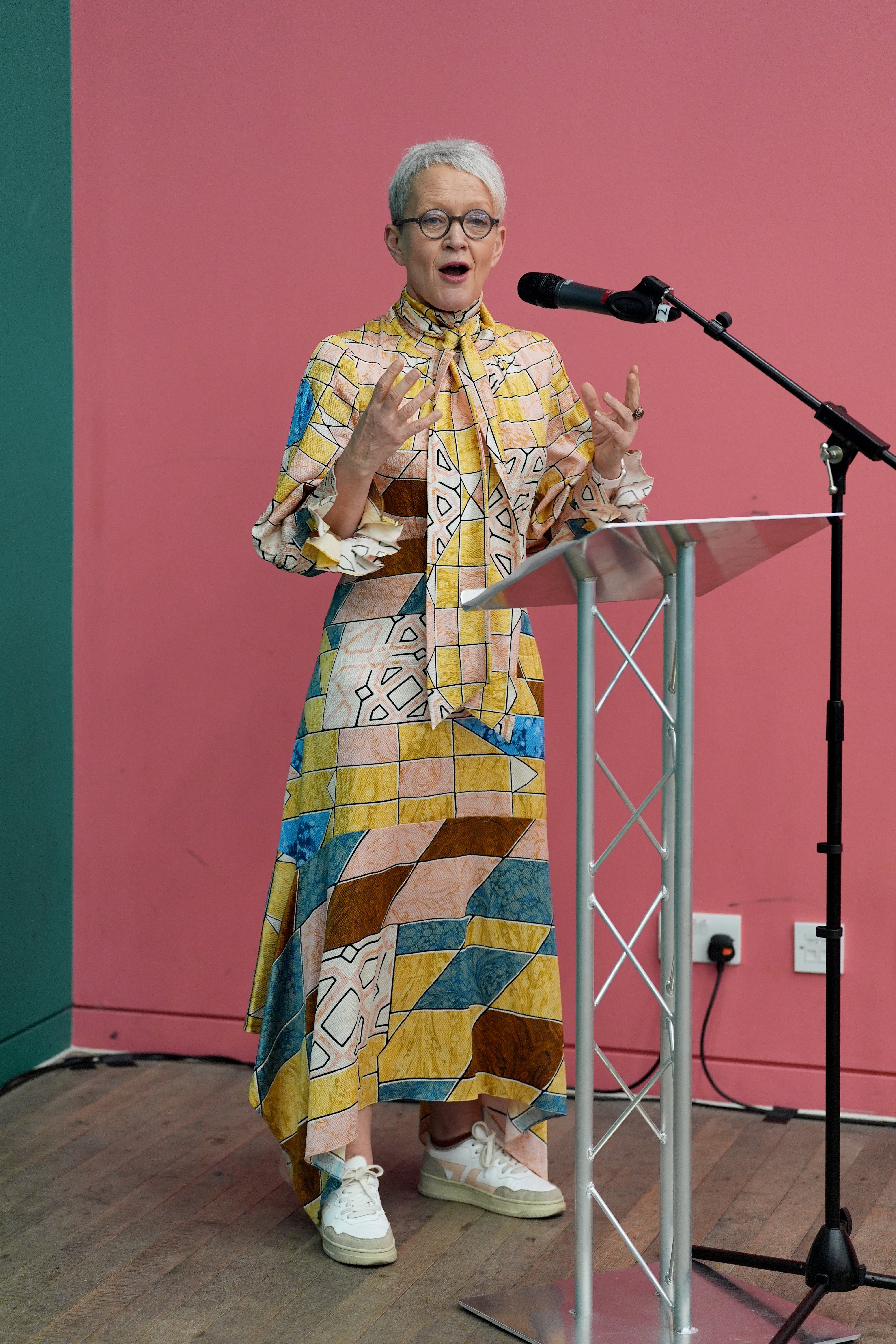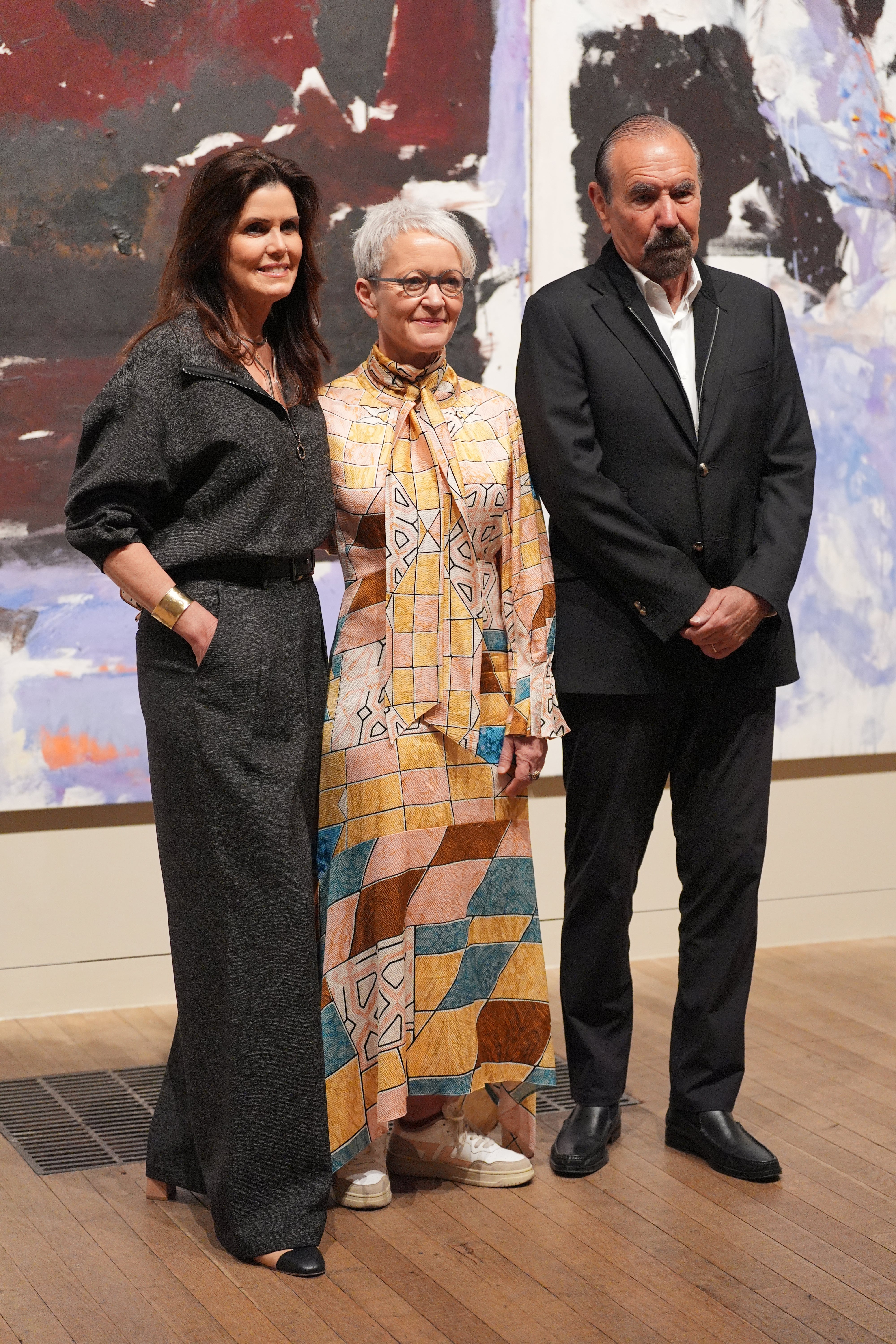British art collectors have been urged to engage in more charitable giving after a multi-million pound painting donated by an American tycoon and his wife was unveiled at the Tate Modern.
A six-metre-long triptych, valued between £2.2 and £3.7m, by the celebrated abstract expressionist Joan Mitchell was gifted to the gallery by Miami businessman Jorge M Pérez. It is on free display opposite Mark Rothko’s Seagram Murals from Thursday, 3 April.
Iva, a landscape work named after the artist’s dog, marks the first large-scale Mitchell piece in the Tate’s collection.
“By the time we realised the importance of Mitchell’s paintings, they were too expensive for a UK public institution to buy,” said Tate director, Maria Balshaw, admitting the institution had “missed the boat”.
Mitchell’s emotional style and gestural brushwork were heavily influenced by nineteenth-century post-impressionist French painters, particularly Henri Matisse. She was one of the few female painters from the era to gain critical acclaim.
Despite being such a major figure in abstract painting, Mitchell astoundingly only had her first exhibition in a UK public gallery in 2010 – almost two decades after her death.
Balshaw said Pérez’s donation of Mitchell’s 1973 painting has “changed the British national collection permanently”, adding it “has taken an act of truly extraordinary generosity” to see the artist’s work hung on the walls of the landmark London gallery.

“There is a long tradition in the US of philanthropic giving,” the Tate director said of Pérez’s lavish donation, noting it would be “wonderful” to see more donations from art collectors in the UK.
“It would be wonderful if we saw even more incentivisation for giving from the government,” she added.
Pérez said of his decision to donate the painting: “My family and I have always believed in the power of public art in enriching communities and Tate has been instrumental in making art accessible to all. We are honoured to contribute to that mission with this gift.”
Meanwhile, Pérez’s wife, Darlene, added: “Women artists play a significant role in shaping the cultural landscape and it’s pivotal that we support and celebrate their contributions.

“By championing Mitchell and her legacy, we hope to inspire greater visibility and opportunity for women artists worldwide, helping to ensure their work is seen, studied and appreciated for generations to come.”
Mitchell was born to a wealthy Chicago family in 1925 and studied art at the School of the Art Institute of Chicago before settling in New York in 1949.
After committing to abstraction, Mitchell quickly found her place in the New York art world, maintaining creative discourse with contemporaries including Philip Guston, Franz Kline and Willem de Kooning.
A decade later, the artist spent a decade in Paris before relocating to the French countryside where she bought a small house in Vétheuil above a shed and area of land that once belonged to Monet.
Mitchell became the first female American artist to have a solo exhibition at the Musée d'Art Moderne de Paris in 1982. Two years later, she was diagnosed with advanced oral cancer and underwent radiation treatment.

Following a long period during which she continued to work despite her declining health, Mitchell died in Paris in 1992, leaving behind wishes to form the Joan Mitchell Foundation to support emerging artists.
“Painting is the only art form except still photography which is without time,” Mitchell said of her love of the artform in 1986.
“It never ends, it is the only thing that is both continuous and still. Then I can be very happy. It’s a still place. It’s like one world, one image.”
London’s oldest art fair marks 40th year with new works by celebrated British artists
MF Husain painting surfaces after 70 years and sells for historic $13.8m
Banksy’s take on Vettriano painting sells for £4.3m days after artist’s death
Jack Vettriano, Scottish painter behind iconic The Singing Butler, found dead
New exhibition at British Museum to display rare Japanese prints
Rubens masterpiece in National Gallery may not be legitimate, fresh evidence claims







